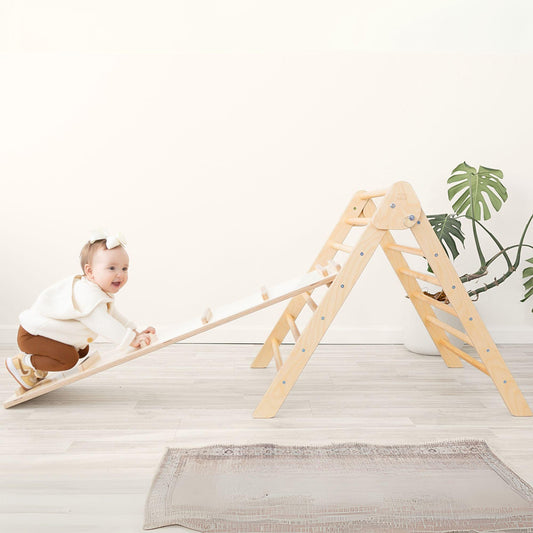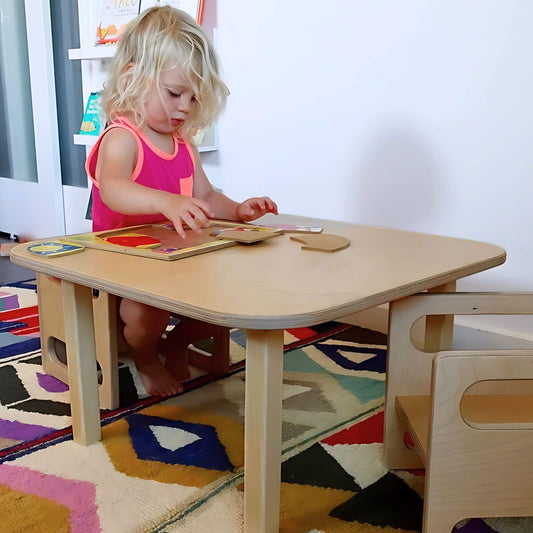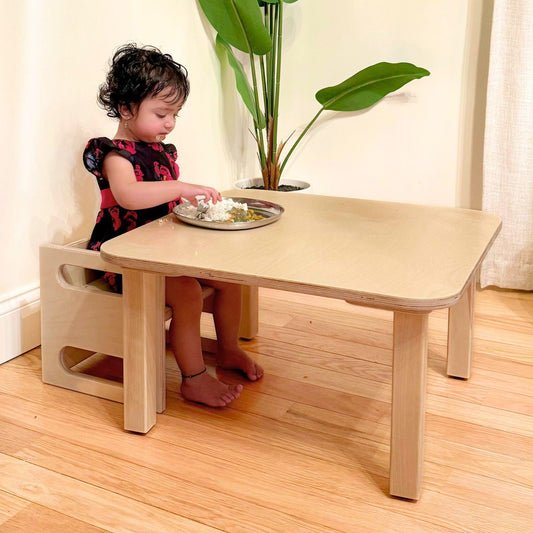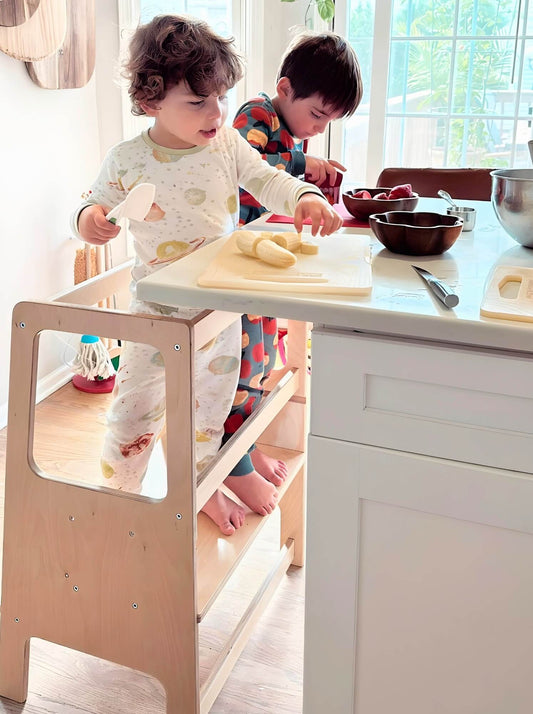
The 6 Stages of Play—and How Parents Can Support Each One
Share

Play is more than just entertainment for children—it’s how they learn about the world, build relationships, and develop essential skills for life. From the outside, it can look like “just play,” but developmental psychologists have long understood that play follows a natural progression, with each stage offering unique opportunities for growth.
Think of play as the child’s “work.” It’s how they practice problem-solving, test boundaries, build social skills, and even regulate their emotions. Every tower of blocks that tumbles down, every round of peek-a-boo, and every pretend tea party is shaping the way your child thinks, feels, and relates to the world.
Understanding these stages helps us, as parents, shift perspective: instead of worrying if our child is “playing the right way,” we can celebrate how their current stage of play is actively supporting their brain, body, and social development. The six stages of play were first identified by sociologist Mildred Parten Newhall in 1929, and her work continues to shape how educators and parents understand early childhood today.
In this post, we’ll walk through the six stages of play—unoccupied, solitary, onlooker, parallel, associative, and cooperative—explaining why each one matters and sharing one way you can support your child at each step.
1. Unoccupied Play (Birth–3 months)
Babies are simply observing their world. Their movements—stretching, kicking, waving—may look random, but they’re busy building the groundwork for attention and motor skills.
Why it matters: Even when it looks like “nothing is happening,” babies are laying the foundation for focus, curiosity, and future play.
Parent tip: Give your baby time on a safe blanket or play mat without too many distractions. Quiet observation is powerful learning.
2. Solitary Play (0–2 years)
Young children often prefer to play alone, exploring toys and objects without seeking others.
Why it matters: Solitary play builds independence, problem-solving, and concentration—all skills they’ll need when engaging with others later.
Parent tip: Provide simple, open-ended toys (blocks, stacking cups, rattles) and resist the urge to interrupt. Let them explore at their own pace.
3. Onlooker Play (Around 2 years)
Children begin to watch others play, even if they don’t join in. This stage is about observing, imitating, and absorbing social cues.
Why it matters: Onlooker play is the first step toward social learning—children are learning how play works by studying peers and adults.
Parent tip: Model play yourself. Narrate what you’re doing with toys, or let your child watch siblings or peers. They’re learning by watching.
4. Parallel Play (2–3 years)
Children play side by side without directly interacting. They may use the same toys but remain focused on their own activity.
Why it matters: Parallel play helps children practice independence while becoming socially aware. They’re learning to coexist with others in shared spaces.
Parent tip: Arrange playdates or set up activities with duplicate toys. Just being near other children builds comfort with social interaction.

5. Associative Play (3–4 years)
Children begin interacting—sharing materials, talking, and copying each other—but without structured goals.
Why it matters: This stage introduces cooperation, language skills, and early negotiation as children begin to connect through play.
Parent tip: Encourage sharing without forcing it. Offer group-friendly activities like art supplies or pretend-play props that naturally spark interaction.
6. Cooperative Play (4+ years)
Here, children create rules, assign roles, and work toward shared goals. Games, building projects, and imaginative scenarios flourish.
Why it matters: Cooperative play develops teamwork, empathy, and conflict resolution—skills that will carry into school and beyond.
Parent tip: Support their creativity by giving them space, materials, and gentle guidance when conflicts arise. Help them name feelings and problem-solve together.
Why Is It Important?
Play is the child’s language, and every stage—whether it looks like random kicking or elaborate role-playing—is rich with purpose. Understanding the natural progression of play matters because it helps us meet children where they are, instead of rushing them forward or comparing them to others.
Each stage strengthens different skills: focus, independence, social awareness, creativity, empathy, and problem-solving. Studies show that play is fundamental to healthy development, supporting emotional regulation, social competence, and cognitive growth.
By recognizing and valuing these stages, parents can create environments that support—not direct—the child’s growth.
Most importantly, when you step back and trust the process, you’ll see that play isn’t separate from learning—it is learning. Supporting it is one of the most powerful things we can do to nurture confident, capable, and joyful children.

Building a Playspace
Creating an environment that supports these stages of play makes a huge difference in how children engage. The right space doesn’t need to be complicated—it just needs to be accessible, safe, and child-centered.
- Keep it low and within reach: Furniture at a child’s height empowers them to choose their own materials. Try using the RAD Infant Montessori Shelf to store toys within reach.
- Offer open-ended tools: Pieces that can be used in many ways grow with your child and adapt to new stages of play. Toys By Tag are great for cultivating creative play.
- Create zones for movement and focus: A Balance Beam encourages gross motor development, while a table or shelf provides a home for quieter play.
- Leave space for imagination: Sometimes the most important ingredient is open floor space where children can build, pretend, and collaborate freely. An open area with a centerpiece, like a Rocking Boat or other items from the RAD Playspace Collection is a great way to foster imaginative playtime!
When you thoughtfully prepare a playspace, you’re not just setting up furniture—you’re building the backdrop for exploration, discovery, and independence!

















 Off
Off
